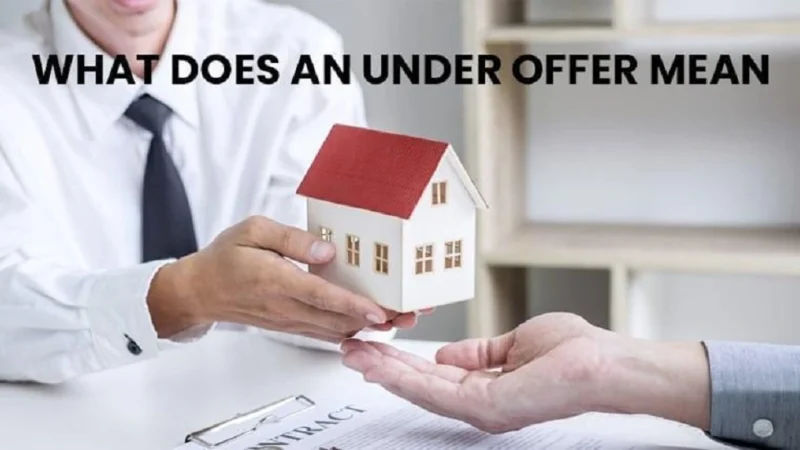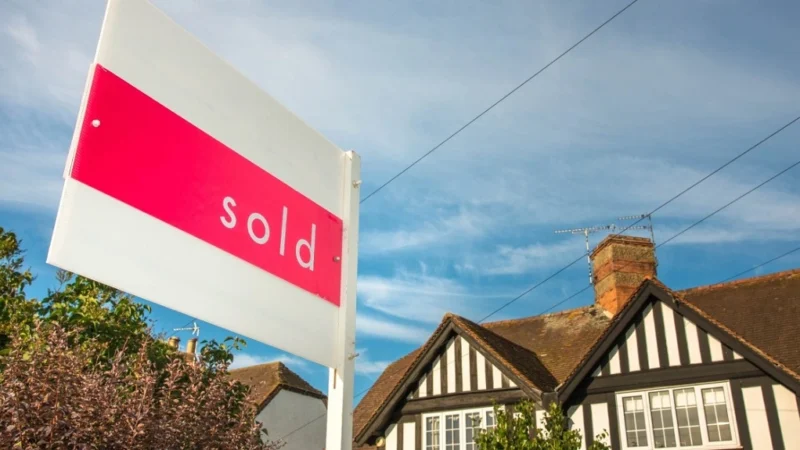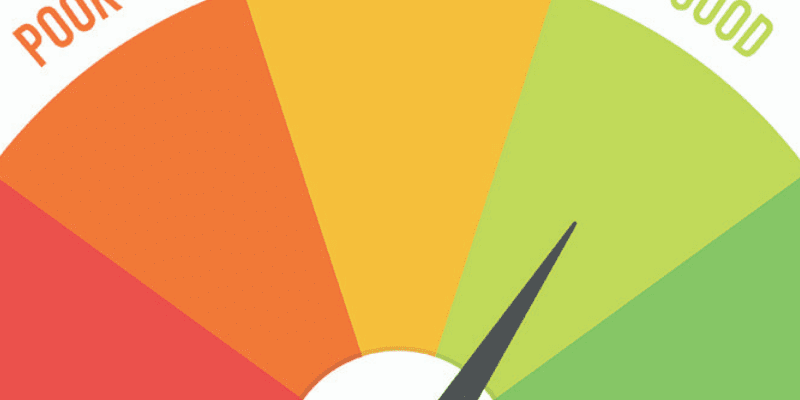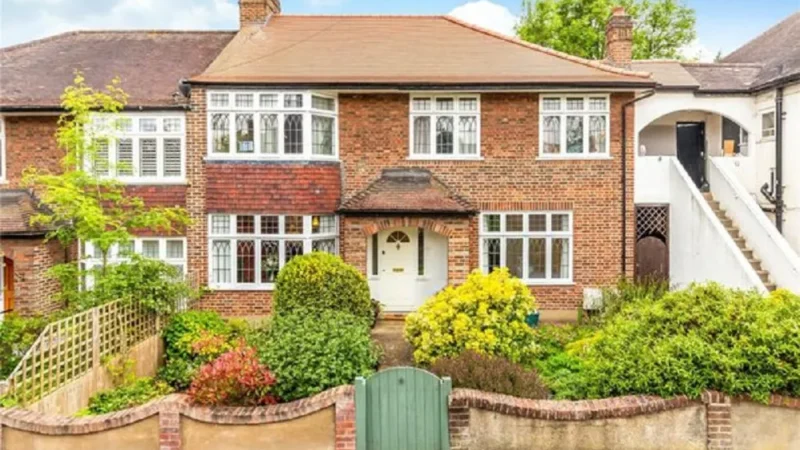What Is Stamp Duty And How Much Do I Need To Pay?

Table of Contents
ToggleStamp Duty
If you’re buying a property in the UK, there’s a good chance that you will need to pay Stamp Duty Land Tax to the Government. Whether you need to pay the Tax and how much you will owe all depends on the price of the property being bought and your situation as a homebuyer.
In this guide, we aim to give you an overview of Stamp Duty by answering some key questions and looking at other topics around the Tax. We’ll cover:
What is Stamp Duty?
Stamp Duty Land Tax (SDLT) is a tax levied on land transactions in England and Northern Ireland. It was introduced in 2003 and replaced the original Stamp Duty. SDLT is charged on the purchase price of land or property, and the amount of tax you pay depends on the property’s price and whether you are a first-time buyer.
These taxes apply to freehold purchases (property and land owned outright), leasehold purchases (property and land owned for the duration of the lease agreement with the freeholder), shared ownership schemes and a transferred land or property in exchange for payment, for example, you take on a mortgage or buy a share in a house. It also applies whether you buy with cash or a mortgage.
What is a Stamp Duty Threshold?
The Stamp Duty Threshold in the UK refers to the purchase price limit at which Stamp Duty Land Tax (SDLT) starts to apply on residential property purchases in England and Northern Ireland.
Currently, the standard threshold is £250,000. This means if you buy a property for less than this amount, you won’t have to pay any SDLT. However, there are some exceptions and variations to be aware of:
- First-time buyer relief: If you’re a first-time buyer, the threshold increases to £425,000. This applies to properties up to £625,000, where a reduced rate of 5% applies to the portion between £425,000 and £625,000.
- Additional property surcharge: If you’re buying a different property (second home, buy-to-let, etc.), you’ll pay a 3% surcharge on top of the standard SDLT rates. This effectively raises the threshold for additional properties to £253,000.
Who pays Stamp Duty?
In the UK, the person responsible for paying Stamp Duty Land Tax (SDLT) is the buyer of the property (land or residential) in England and Northern Ireland, not the seller. This applies regardless of whether you’re buying the property outright or with a mortgage.
However, it’s worth noting that:
- Your solicitor typically handles the payment: They’ll calculate the tax due, submit the SDLT return to HMRC, and make the payment on your behalf as part of the conveyancing process.
- The seller is responsible for ensuring you are aware of any potential SDLT liabilities: They should disclose relevant information about the property and potential tax implications for your purchase.
How much is Stamp Duty in England and Northern Ireland?
As of February 8, 2024, the amount of Stamp Duty you pay in England and Northern Ireland depends on several factors:
- Purchase Price:
- The SDLT is calculated based on a banded system. Different rates apply to different portions of the purchase price.
- First-Time Buyer Status:
- Eligible first-time buyers receive significant relief:No SDLT on purchases up to £425,000.
- Discounted rate of 5% on the portion between £425,000 and £625,000.
- Additional Property Surcharge:
- This applies to second homes, buy-to-let properties, and other additional properties. It adds a 3% surcharge on top of standard rates.
Current Standard Rates (for non-first-time buyers and properties not subject to surcharges):
Purchase Price Range SDLT Rate
Up to £125,000 0%
£125,001 – £250,000 2%
£250,001 – £925,000 5%
£925,001 – £1.5 million 10%
Over £1.5 million 12%
Example:
- John, a second-time buyer, purchases a house in England for £500,000.
- He pays SDLT as follows:0% on the first £125,000.
- 2% on the next £125,000 (£2,500).
- 5% on the portion between £250,001 and £925,000 (34.375% * £675,000 = £23,250).
Total SDLT for John: £25,750.
Stamp Duty for First-Time Buyers
As a first-time buyer in England and Northern Ireland, you benefit from significant SDLT relief, making it easier to get on the property ladder. Here’s a detailed breakdown with data and examples:
Key Points:
- No SDLT: You pay no SDLT on properties up to £425,000.
- Discounted Rate: For purchases between £425,001 and £625,000, you only pay a reduced rate of 5% on the portion that exceeds £425,000.
- No Surcharge: Unlike additional property purchases, first-time buyers are exempt from the 3% surcharge.
Example 1: Purchase below Threshold:
- Sarah, a first-time buyer, purchases a flat for £380,000.
- Since the price is below the £425,000 threshold, she pays no SDLT.
Example 2: Purchase within Discounted Rate Range:
- David, a first-time buyer, buys a house for £550,000.
- He pays:No SDLT on the first £425,000.
- 5% on the remaining £125,000 (£6,250).
- His total SDLT is £6,250.
Example 3: Purchase above Discounted Rate Range:
- Emily, a first-time buyer, purchases a townhouse for £780,000.
- She pays:No SDLT on the first £425,000.
- 5% on the portion between £425,001 and £625,000 (£10,000).
- Standard rate (5%) on the remaining £155,000 (£7,750).
- Her total SDLT is £17,750.
Stamp Duty for Buy-to-Let and Additional Properties
Purchasing a buy-to-let or additional property (second home, holiday home, etc.) comes with additional Stamp Duty Land Tax (SDLT) charges compared to buying your main residence.
Key Points:
- Additional Surcharge: You pay a 3% surcharge over the standard SDLT rates. This effectively raises the threshold for other properties to £253,000.
- No First-Time Buyer Relief: You are not eligible for the first-time buyer relief, which exempts purchases up to £425,000 and discounts rates up to £625,000.
- Standard Rates:0% on the first £125,000.
- 2% on the portion between £125,001 and £250,000.
- 5% + 3% surcharge (8%) on the portion between £250,001 and £925,000.
- 10% + 3% surcharge (13%) on the portion between £925,001 and £1.5 million.
- 12% + 3% surcharge (15%) on the portion over £1.5 million.
Example:
- John, who already owns a house, purchases a buy-to-let flat for £400,000.
- He calculates the SDLT:No SDLT on the first £125,000.
- 2% on the next £125,000 (£2,500).
- 8% on the remaining £150,000 (£12,000).
- Total SDLT: £14,500 (including the 3% surcharge).
Moving Home Before Selling your Old Property
If you move home before you’ve sold your current home, this is still classed as buying an additional residential property in the eyes of the Government, so you will need to pay the extra 3% rate.
But, if you complete the sale of your previous house within 36 months of purchasing your new one, you can claim the extra 3% back as a refund — the Government has a form you can fill in to start this process. You need to make this claim within three months of the sale of your old residence.
Stamp Duty for Mixed-Use Properties
Mixed-use properties, featuring residential and non-residential elements, come with different Stamp Duty Land Tax (SDLT) considerations compared to purely residential or non-residential properties.
Key Points:
- Tax Rates:You pay SDLT based on two separate sets of rates:
- Table A rates: Apply to the residential portion of the property. (Same as standard residential SDLT rates)
- Table B rates: Apply to the non-residential portion of the property. (Lower rates compared to Table A)
- Apportionment: You need to accurately determine each portion’s value (residential and non-residential) to apply the correct rates. This can be complex and often involves professional valuation.
- Multiple Dwellings Relief (MDR):You may be eligible for MDR on the residential portion, further reducing your SDLT liability.
Example:
- You purchase a property with a flat (residential) on the ground floor and a shop (non-residential) above.
- The total purchase price is £500,000.
- After professional valuation, it’s determined that the flat is worth £400,000 and the shop is worth £100,000.
- SDLT Calculation:
- Residential (Flat):
- Apply Table A rates (e.g., 2% on £400,000 = £8,000).
- If eligible, apply MDR for further reduction.
- Non-residential (Shop):
- Apply Table B rates (e.g., 5% on £100,000 = £5,000).
- Total SDLT:Sum the SDLT for both portions, considering any adjustments from MDR.
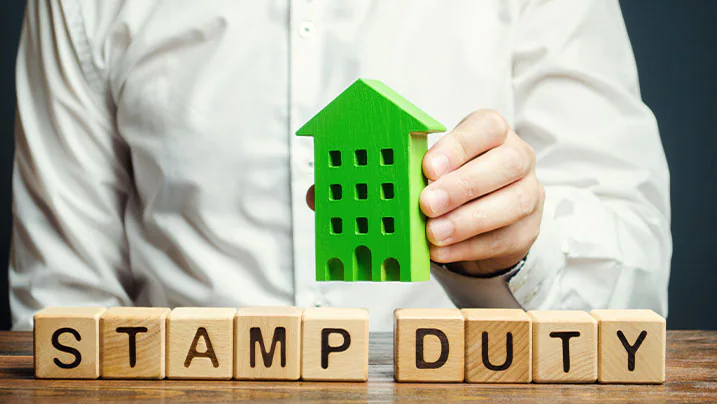
How much stamp duty will I pay in Wales?
In Wales, instead of Stamp Duty Land Tax (SDLT), a different tax called Land Transaction Tax (LTT) applies to land and property purchases. Here’s a breakdown of how much LTT you might pay:
Key Points:
- Threshold: You only pay LTT if the purchase price is over £225,000 (both residential and non-residential).
- Rates:LTT is charged on a banded system:
- 0% on the first £225,000.
- 6% on the portion between £225,000 and £400,000.
- 5% on the portion between £400,000 and £750,000.
- 10% on the portion between £750,000 and £1.5 million.
- 12% on the portion above £1.5 million.
- Additional Property Surcharge:Unlike SDLT, LTT has no surcharge for additional properties.
Example:
- John, buying his first home in Wales, purchases a house for £350,000.
- He calculates the LTT:No LTT on the first £225,000.
- 6% on the remaining £125,000 (£7,500).
- His total LTT is £7,500
Who is entitled to a Stamp Duty exemption?
In both England and Northern Ireland and Wales, there are various situations where you might be entitled to a Stamp Duty exemption or relief, reducing your tax liability. Here’s a breakdown:
England & Northern Ireland (Stamp Duty Land Tax):
Exemptions:
- First-time buyers: No SDLT on residential purchases up to £425,000, and a discounted rate of 5% on the portion between £425,000 and £625,000.
- Multiple dwellings relief (MDR): Applicable to purchases with multiple dwellings (e.g., flats in a building). Offers reductions based on specific criteria.
- Charity land transactions: Exempt for charities acquiring land solely for their charitable purposes.
- Listed building conversions: Certain conversions of listed buildings may qualify for exemption.
Reliefs:
- First-time buyer relief: As mentioned above.
- Second homes and buy-to-let surcharge relief: Available for first-time buyers purchasing additional properties who meet specific criteria.
- Disabled access relief: Provides relief for adaptations made to a property for disabled persons.
- Main residence relief: Reduces SDLT for those selling their main residence and buying another within a set timeframe.
Wales (Land Transaction Tax):
Exemptions:
- First-time buyers: No LTT on residential purchases up to £225,000.
- Charity land transactions: Exempt for charities acquiring land solely for their charitable purposes.
- Listed building conversions: Certain conversions of listed buildings may qualify for exemption.
Reliefs:
- First-time buyer relief: As mentioned above.
- Armed forces relief: Available for members of the armed forces buying a property in certain circumstances.
- Wales Rural Housing Grant: Offers relief for some purchases in rural areas.
Is stamp duty refundable?
Whether stamp duty is refundable depends on the specific situation and jurisdiction.
General Rule: Stamp Duty Land Tax (SDLT) is typically not refundable once paid.
- Overpayment: If you accidentally overpaid SDLT, you can request a refund from HMRC.
- Error by HMRC: If HMRC made an error in calculating your SDLT liability, you might be eligible for a refund.
- Cancelled transaction: If the property purchase falls through due to specific reasons (e.g., legal issues), you may be able to reclaim some or all of the SDLT paid. However, this isn’t guaranteed and depends on the circumstances.
How much is the Land and Buildings Transaction Tax (LBTT) in Scotland?
In Scotland, Land and Buildings Transaction Tax (LBTT) applies to purchases of land and buildings. Here’s a breakdown of how much you might pay:
Key Points:
- Threshold: You only pay LBTT if the purchase price is over £145,000, regardless of residential or non-residential.
- Rates:LBTT is charged on a banded system:
- 0% on the first £145,000.
- 2% on the portion between £145,000 and £250,000.
- 5% on the portion between £250,000 and £325,000.
- 10% on the portion between £325,000 and £750,000.
- 12% on the portion above £750,000.
Additional Property Surcharge: Similar to SDLT in England & Northern Ireland, a 3% surcharge applies to additional property purchases (second homes, buy-to-let, etc.).
First-Time Buyer Relief:
- Significantly reduces LBTT for eligible first-time buyers:
- Increases the nil rate band to £175,000.
- Offers a reduced rate of 2% on the portion between £175,000 and £250,000.
Example 1 (First-Time Buyer):
- Sarah, a first-time buyer, purchases a flat for £220,000.
- She calculates the LBTT:No LBTT on the first £175,000 (increased nil rate band).
- 2% on the remaining £45,000 (£900).
- Her total LBTT is £900.
Example 2 (Additional Property):
- David already owns a house and buys a buy-to-let apartment for £400,000.
- He considers the standard rates and the 3% surcharge:
- No LBTT on the first £145,000.
- 2% on the portion between £145,000 and £250,000 (£2,100).
- 5% + 3% surcharge (8%) on the portion between £250,000 and £325,000 (£6,000).
- 10% + 3% surcharge (13%) on the remaining £75,000 (£9,750).
- Total LBTT: £17,850 (including the surcharge).
Who is Entitled to a Land and Buildings Transaction Tax Exemption?
Several situations qualify for a LBTT exemption, where no tax needs to be paid and no return needs to be filed. You can be exempt from LBTT if:
- The interest in question is exempt, namely a security interest such as the creditor’s interest in a standard security.
- Land or buildings may be gifted or the ownership transferred to another person for no ‘chargeable consideration’.
- Acquisitions by the Crown.
- Residential leases and licences.
- Transactions in connection with a divorce.
- Transactions in connection with the dissolution of a civil partnership.
- Assent and appropriations by personal representatives.
- Variation of testamentary dispositions.
There are exemptions to these cases, for further information you can check the LBTT Legislation Guidance.
When and How do you Pay Stamp Duty?
The process of paying Stamp Duty, also known as SDLT in England and Northern Ireland and LTT in Wales, differs depending on your location and specific situation.
England & Northern Ireland (SDLT):
When to pay:
- You must pay SDLT within 14 days of completing your property purchase.
- If you fail to pay within the timeframe, penalties and interest will be applied.
How to pay:
- Online: Submit an SDLT return and pay electronically through the HMRC website
- Post: Submit a paper return and pay by cheque or postal order. However, this method is slower and less recommended.
Wales (LTT):
When to pay:
- Similar to SDLT, you must pay LTT within 30 days of completing your property purchase.
- Penalties and interest apply for late payments.
How to pay:
- Online: Submit an LTT return and pay electronically through the Welsh Revenue Authority website
- Post: Submit a paper return and pay by cheque or postal order.
Scotland (LBTT):
When to pay:
- You must pay LBTT within 30 days of completing your property purchase.
- Late payments incur penalties and interest.
How to pay:
- Online: Submit an LBTT return and pay electronically through the Revenue Scotland website
- Post: Submit a paper return and pay by cheque or postal order.
What is the tax on a second home in the UK?
The tax you pay on a second home in the UK depends on which part of the UK you’re buying in – England & Northern Ireland, Wales, or Scotland.
England & Northern Ireland (Stamp Duty Land Tax):
- Higher Rates: You pay 3% surcharge on top of the standard SDLT rates when buying a second home (buy-to-let, holiday home, etc.).
- No First-Time Buyer Relief: You are not eligible for the first-time buyer relief which exempts purchases up to £425,000 and discounts rates up to £625,000.
- Standard Rates:0% on the first £125,000.
- 2% on the portion between £125,001 and £250,000.
- 5% + 3% surcharge (8%) on the portion between £250,001 and £925,000.
- 10% + 3% surcharge (13%) on the portion between £925,001 and £1.5 million.
- 12% + 3% surcharge (15%) on the portion over £1.5 million.
Example:
John, who already owns a house, purchases a buy-to-let flat for £400,000.
- He calculates the SDLT with the surcharge:No SDLT on the first £125,000.
- 2% on the next £125,000 (£2,500).
- 8% on the remaining £150,000 (£12,000).
- Total SDLT: £14,500 (including the 3% surcharge).
Wales (Land Transaction Tax):
- No Surcharge: Unlike SDLT, LTT has no additional charge for second homes.
- First-Time Buyer Relief: Available for first-time buyers purchasing any property, including second homes.
- Standard Rates:0% on the first £225,000.
- 6% on the portion between £225,000 and £400,000.
- 5% on the portion between £400,000 and £750,000.
- 10% on the portion between £750,000 and £1.5 million.
- 12% on the portion above £1.5 million.
Example:
Sarah, a first-time buyer, purchases a holiday home in Wales for £350,000.
- She calculates the LTT:No LTT on the first £225,000.
- 6% on the remaining £125,000 (£7,500).
- Total LTT: £7,500.
Scotland (Land and Buildings Transaction Tax):
- Additional Property Surcharge: Similar to SDLT, a 3% surcharge applies to additional property purchases.
- First-Time Buyer Relief: Offers significant reductions for eligible first-time buyers, even for second homes.
- Standard Rates:0% on the first £145,000.
- 2% on the portion between £145,000 and £250,000.
- 5% on the portion between £250,000 and £325,000.
- 10% on the portion between £325,000 and £750,000.
- 12% on the portion above £750,000.
Example:
David, who owns a house, buys a second apartment for £400,000.
- He includes both standard rates and the 3% surcharge:No LBTT on the first £145,000.
- 2% on the portion between £145,000 and £250,000 (£2,100).
- 8% on the portion between £250,000 and £325,000 (£6,000).
- 13% on the remaining £75,000 (£
Can Stamp Duty be added to my Mortgage?
Technically, in England and Northern Ireland, you cannot directly add Stamp Duty to your mortgage. However, there are workarounds to achieve a similar outcome:
- Increase Loan Amount:
- You can request a larger mortgage to cover both the property purchase price and the anticipated Stamp Duty. This increases your borrowing amount and, consequently, your monthly repayments.
- Consider the impact on your affordability before choosing this option.
- Offset Mortgages (England & Wales Only):
- If you have significant savings, you can consider an offset mortgage. This links your savings account to your mortgage, reducing the interest charged on the mortgage amount based on your savings balance.
- Use your savings to pay the Stamp Duty upfront and benefit from reduced mortgage interest over time.
- Cashback Mortgages:
- Some lenders offer cashback mortgages, providing a lump sum upfront (usually a percentage of the loan amount). You can use this cashback to pay the Stamp Duty.
- Be mindful of potential higher interest rates associated with cashback mortgages.
We are accredited with some of the top Mortgage brokers in UK so that we can provide a solution for your finance needs. Mortgage advisory services are generally free. If you require an expert mortgage broker, then be sure to reach out to us. Click the button


